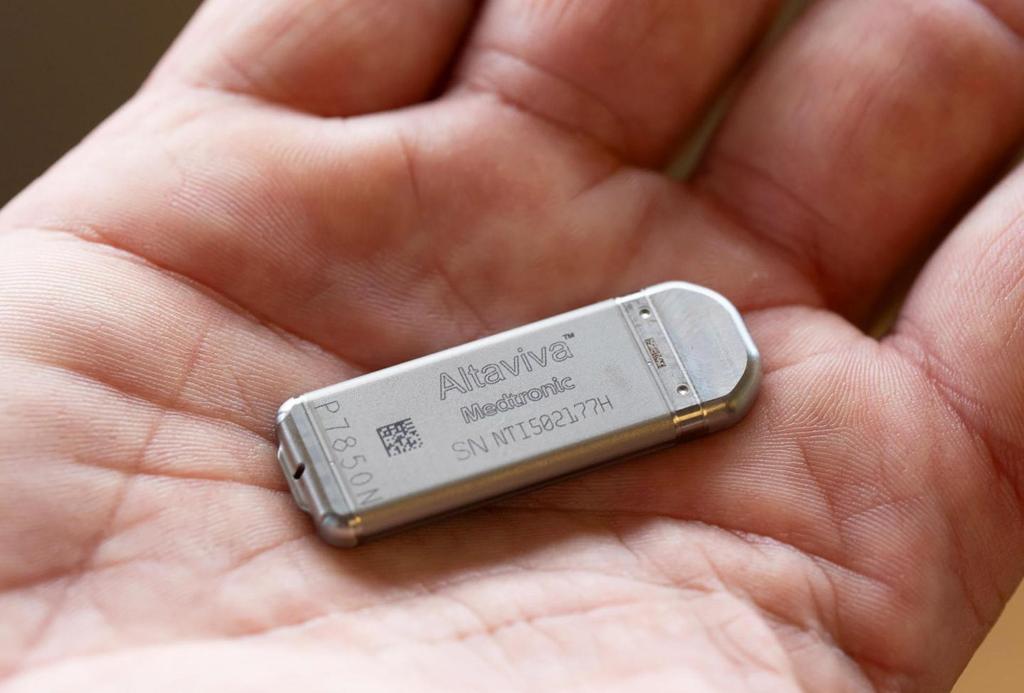In an innovative stride for individuals suffering from urinary urge incontinence, Medtronic has developed a new implant that could significantly enhance patients’ quality of life. Positioned away from the urinary tract, this device is inserted beneath the skin near the ankle and aims to provide much-needed relief without the hassle of traditional treatments.
The newly approved Altaviva device acts by stimulating the tibial nerve, which helps mitigate sudden urges to urinate. Roughly the size of two chiclets, this groundbreaking technology received a green light from the Food and Drug Administration (FDA) last month after clinical trials commenced in April 2021.
Medtronic has a long history in this area, focusing on nerve stimulation solutions for nearly three decades. “We’ve been in this space for 30 years,” said Emily Elswick, president of the pelvic health business. “And I think this is really going to help write a new book in this space — not just a new chapter, but a new book.”
Although this is the first instance of Medtronic using tibial nerve stimulation with an implant, it builds on years of advancements in nerve stimulation for various medical conditions, including Parkinson’s disease. The company is leveraging a broad advertising campaign, featuring over 7,000 billboards, to reach what CEO Geoff Martha described as a “huge market.”
“We’ll take market share, which will be fun,” Martha remarked during a recent analyst call, emphasizing his enthusiasm about not just taking market share but also dramatically expanding it.
In a comparable segment, the Revi device from BlueWind Medical operates on a similar principle but requires patients to wear an external sleeve for activation.
Dr. Kevin Benson, a urogynecologist at Sanford Health and a principal investigator in the pivotal study for the Altaviva device, explained the mechanics behind urge incontinence, stating, “This condition occurs when sensory wiring in the bladder wall that should normally be quiet becomes overactive.” This disruption leads to sudden urges and can leave patients racing for the restroom.
Elswick added a more personal touch, noting that this medical condition often carries a sense of shame. “A lot of them don’t want to talk about it,” she said. “They’re afraid. Or they just don’t know where to go to seek treatment.”
Historically, patients have relied on wearing absorbent pads, which Dr. Benson said forces individuals to “essentially compromise your life to live with a problem.” Additionally, medications meant to treat urinary incontinence can be accompanied by side effects such as dry eyes, dry mouth, constipation, and may even heighten the risk of dementia — a concern for many healthcare providers.
A conventional alternative treatment, tibial nerve stimulation, necessitates regular physician visits over a 12-week span, during which medical professionals insert an energized needle into the ankle to stimulate the nerves.
Prior to his departure in 2020, former Medtronic CEO Omar Ishrak had advocated for expanding tibial nerve treatment options. This vision paved the way for the Altaviva project, according to Matt Stonehouse, vice president of research and development at Medtronic Pelvic Health. The development of the implant primarily took place at the company’s Rice Creek facility, notably amidst the challenges posed by the COVID-19 pandemic.
“We had to figure out how to do research and development during a time when the world was a little bit upside down,” Stonehouse recalled.
The Altaviva implant features a silver design and is equipped with both an active electrode and a return electrode, allowing energy to flow into the ankle. Unlike previous Medtronic implants, which stimulated the sacral nerve from the lower back using wires, Altaviva eliminates the need for wiring, thus streamlining the procedure.
During a demonstration at the Rice Creek facility, Stonehouse showcased the insertion process, which takes approximately 15 minutes once the patient is on the operating table. He first makes a surgical incision of less than two centimeters at the inner ankle. After confirming he has reached the fascia, he utilizes a tool to create a pocket for the implant beneath the skin.
Compared to competitor devices, Stonehouse emphasized Altaviva’s less invasive approach. “It’s just a more invasive procedure,” he noted, referring to the competitor’s method of placing devices deeper below the fascia.
Once activated — typically before the patient leaves the office — the implant sends electrical impulses through the nerves to help the bladder communicate more effectively with the brain. The battery within the device lasts for 15 years and only requires recharging once or twice a year.
While Medtronic plans to unveil unpublished clinical results that contributed to Altaviva’s approval at an upcoming conference, Dr. Benson assured that the findings would demonstrate the device’s effectiveness with minimal complications. “People liked it, did well and had very minimal complications,” he stated.






